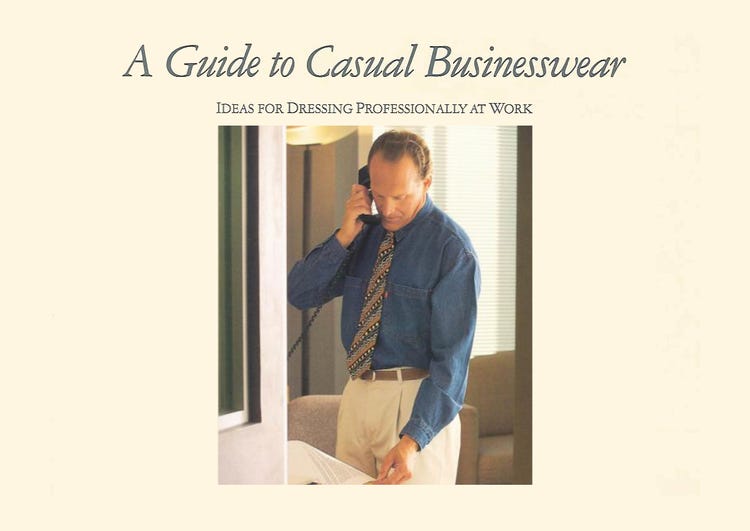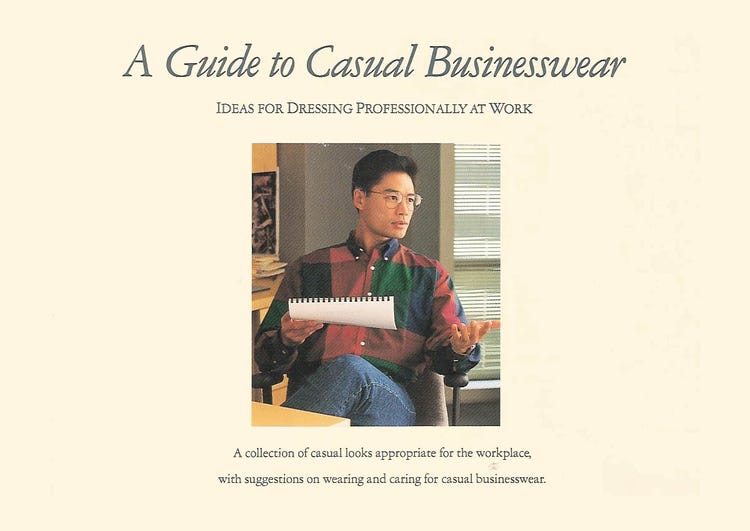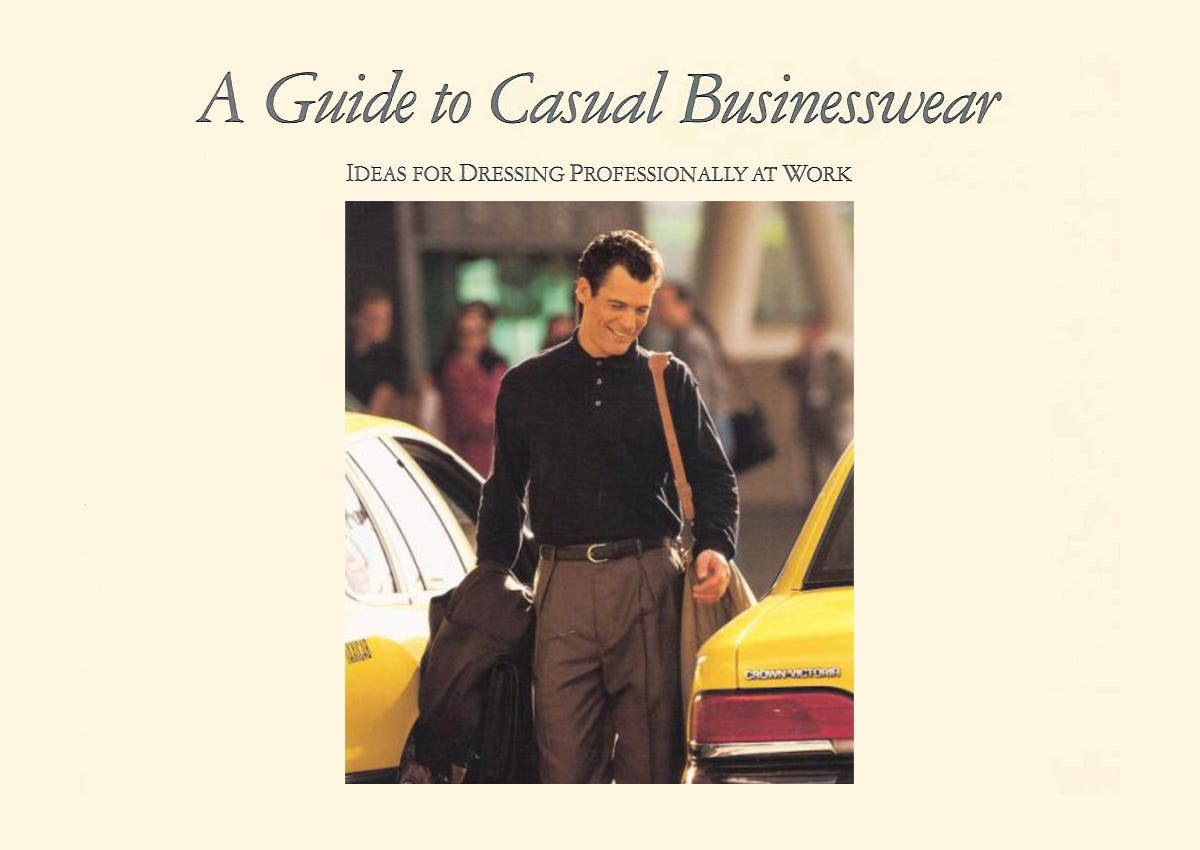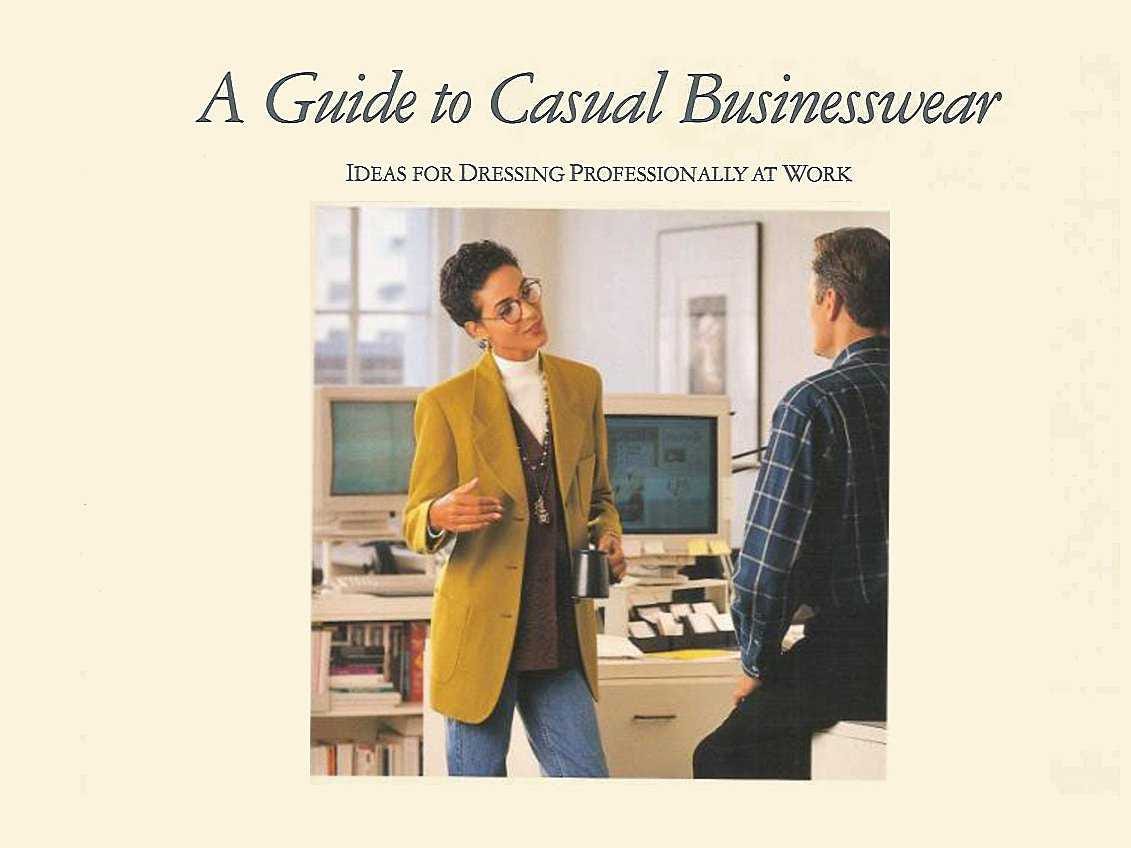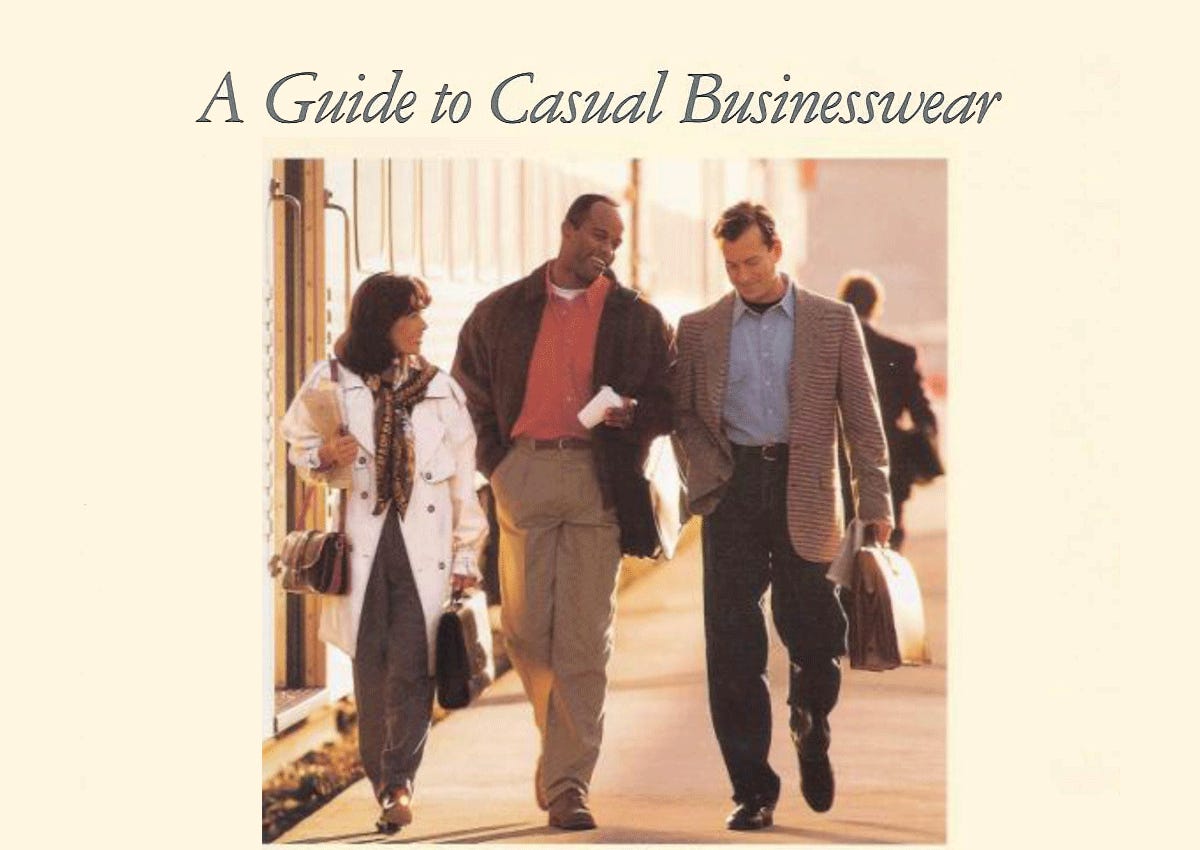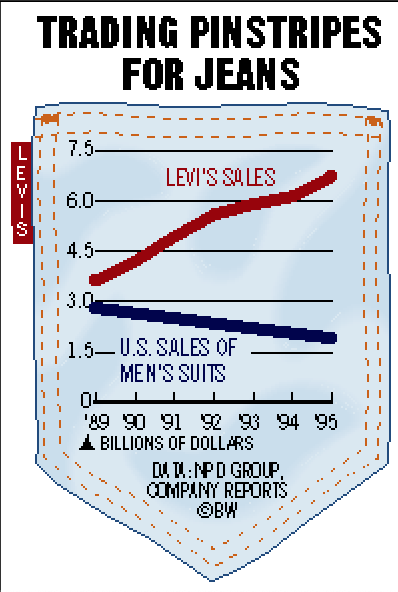Here& #39;s a great growthhacking story.
In the early 90s, Levi-Strauss noticed two coincident trends:
1. Apparel sales had declined significantly
2. Casual officewear trends had spread from Silicon Valley to the rest of the USA
In the early 90s, Levi-Strauss noticed two coincident trends:
1. Apparel sales had declined significantly
2. Casual officewear trends had spread from Silicon Valley to the rest of the USA
While casualwear increased office morale, many office managers complained that workers used & #39;casual& #39; as an excuse to dress & #39;inappropriately& #39;. (obvs sounds super dated now)
Seeing an opportunity, Levi& #39;s decided they would be the ones to define the standards of business casual.
Seeing an opportunity, Levi& #39;s decided they would be the ones to define the standards of business casual.
In 1992, Levi& #39;s put together a pamphlet that showed young professionals in Levi& #39;s products, leading with their struggling Dockers khaki brand, called it "A Guide to Casual Businesswear", and sent it to 25,000 HR departments across the US.
The pamphlet included a definition of business casual and a set of guidelines for & #39;acceptable& #39; workplace casualwear. It also included a hotline to call if you wanted advice on tweaking your company& #39;s dress code.
But that was just the tip of the marketing strategy.
But that was just the tip of the marketing strategy.
Building out a comprehensive database of HR employees across the US, they mailed out postcards inviting them to runway fashion shows at their retail locations. Names, addresses, and contact information would be collected at the shows to grow the database.
More than just moving product, Levi& #39;s realized they could introduce an entirely new revenue stream. They began offering consulting services to companies like IBM and Aetna.
This became such a hit that Charles Schwab & Co approached them to produce an instructional video.
This became such a hit that Charles Schwab & Co approached them to produce an instructional video.
By 1995, Levi& #39;s recorded sales of $6.2 billion, up 10% from the previous year -- and Dockers quickly became the number one brand of khakis in the US.
Through the campaign, they also pushed business casual adoption from 37% of businesses up to 75% of businesses.
Through the campaign, they also pushed business casual adoption from 37% of businesses up to 75% of businesses.
The campaign was such a success they took it global.
They handed out guides on streetcorners in London, Manila, Milan, and 11 other cities claiming casualwear reduced divorce rates, dandruff, and improved sperm production.
They handed out guides on streetcorners in London, Manila, Milan, and 11 other cities claiming casualwear reduced divorce rates, dandruff, and improved sperm production.
They hired actors to stage mock demonstrations outside stock exchanges and in financial districts against conservative attire, cutting their ties, stripping down to their boxers, and putting on khakis.
And while competitors soon jumped on the bandwagon (Target started selling instructional videos to businesses, Gap started marketing directly to companies, Eddie Bauer sent out a guide), they didn& #39;t win the incredible market share that Levi& #39;s did.
And Levi& #39;s only spend $5M.
And Levi& #39;s only spend $5M.
The lesson:
Years of marketing spin has everyone thinking that businesses -- especially startups -- have to shape the culture to win.
But you don& #39;t shape culture from nothing.
Keep your eye out for changes *already happening* and see how you can best harness it.
Levi& #39;s did.
Years of marketing spin has everyone thinking that businesses -- especially startups -- have to shape the culture to win.
But you don& #39;t shape culture from nothing.
Keep your eye out for changes *already happening* and see how you can best harness it.
Levi& #39;s did.
(PS -- @DCoolican has outlined a similar concept called product-zeitgeist fit. It& #39;s worth a look.)

 Read on Twitter
Read on Twitter